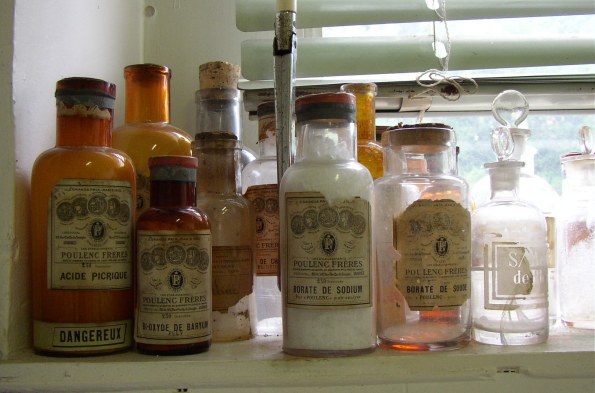How does the “Safe Chemicals Act of 2011” affect toll blending companies?
Last week U.S. Senator Frank R. Lautenberg introduced legislation intended to modernize the very outdated “Toxic Substances Control Act of 1976” (TSCA). The Safe Chemicals Act of 2011 is the most significant legislation in 35 years for the chemical industry, which has lobbied for years to update the TSCA.
What does the “Safe Chemicals Act of 2011” mean for small processing companies, in particular those companies that provide blending services?
Of particular interest and likely concern to toll blending companies are provisions for “chemical processors” to determine safety of their products, this puts the burden of proving safety on the industry and requires reporting on all chemicals regarding identification and usage. Further provisions regarding open access to “reliable chemical information” introduce a host of concerns regarding patented formulas and proprietary processes.
Links to a full version and summary are below, but here are the highlights as posted on Lautenberg’s website:
Highlights of the “Safe Chemicals Act of 2011”
Provides EPA with sufficient information to judge a chemical’s safety. Requires manufacturers to develop and submit a minimum data set for each chemical they produce, while also preventing duplicative or unnecessary testing and encouraging the use of rapid, low-cost, non-animal tests that provide high quality data. EPA will have full authority to request additional information needed to determine the safety of a chemical.
Prioritizes chemicals based on risk. Calls on the EPA to categorize chemicals based on risk, and focus resources on evaluating those most likely to cause harm.
Takes fast action to address highest risk chemicals. Requires EPA to take fast action to reduce risk from chemicals that have already been proven dangerous. In addition, the EPA Administrator is given authority to act quickly if any chemical poses an imminent hazard.
Ensures safety threshold is met for all chemicals on the market. Places the burden of proof on chemical manufacturers to prove the safety of their chemicals. All uses must be identified and determined safe for the chemical to enter the market or continue to be used.
Creates open access to reliable chemical information. Establishes a public database to catalog the chemical information submitted to the EPA by manufacturers, as well as the safety determinations made by the EPA. The EPA will impose requirements to ensure the information collected is reliable.
Promotes innovation and development of green chemistry. Establishes grant programs and research centers to foster the development of safe chemical alternatives, and brings some new chemicals onto the market using an expedited review process.
At first glance, the main question most companies are asking is who exactly is responsible for the cost of complying with this bill. The section on ensuring a safety threshold for all chemicals on the market is a good example. While the full version does talk about avoiding redundancy and waste to lower the burden on companies, it’s difficult to ascertain whether the formulators, processors, or end distributors will be required to determine the safety of a chemical, or a process. Given the complexity of the chemical industry particularly with regards to the widespread outsources of blending services, its difficult to pinpoint who exactly the burden of proof eventually falls. Even though most blending companies provide a specialty product or service, many manufacture hundreds if not thousands of different formulations representing dozens of independent companies.
The section on creating “open access to reliable chemical information” is likely to cause the greatest controversy with regard to manufacturing at every level, from formula to store shelf. The full version discusses everything from improved MSDS’s, to greater reporting on transportation, to documenting background baseline levels at facilities, to full disclosure on accidental releases. While some of these regulations are already on the books, it’s clear that small companies will likely struggle to cover the costs of compliance.
The new legislation, which is very heavy in consumer protection (as expected) has been closely followed by industry associations and their recent comments tell us a great deal about how these new regulations could end up affecting small blending companies.
Here is an excerpt from the statement released by Charles T. Drevna, president of NPRA, the National Petrochemical & Refiners Association (press release here)
“We continue to support the responsible modernization of our nation’s chemical safety laws. Nothing is more important to NPRA’s members than the safety of the products they produce. Ensuring the continued protection of human health and the environment through effective chemicals risk management policy is vital.
“However, health and environmental protection need not – and should not – come at the expense of American jobs and the economy. If enacted in its current form, Senator Lautenberg’s bill threatens to further damage America’s already fragile manufacturing base.
Here is an excerpt from the American Chemistry Council (ACC) President & CEO Cal Dooley (press release here)
“ACC supported many of the goals and objectives of the senator’s legislation in the last Congress, but his earlier proposal was inconsistent with the principles that we have set out for a successful TSCA modernization in several important respects. Further, the bill contained provisions that would not have produced the benefits intended by its authors. Unfortunately, it appears many of our concerns have not been addressed in this new version, and the bill introduced today could put American innovation and jobs at risk.
From Chris Cathcart, Consumer Specialty Products Association (CSPA) President and CEO (press release here)
“The new bill introduced today moves in the right direction as it seeks to adopt important concepts of prioritization and tiered minimum data set requirements,” Cathcart said. “These two elements, along with the preservation of a risk based system, are essential components of any workable regulatory framework under TSCA. However, we remain concerned about other sections of the bill, including its approach on Reporting and Declarations, the protection of confidential business information (CBI) and the safety standard. A bi-partisan dialogue can resolve these issues.”
From the looks of things, lawmakers are happy to have the chemical industries attention and seem open to sitting down at the table to work out a plan that works for everyone.
A summary of the bill can be found here: http://lautenberg.senate.gov/assets/SafeChem-Summary.pdf
Read the full version here: http://lautenberg.senate.gov/assets/SafeChem.pdf
Please feel free to leave a comment below.
How does toll blending work?
A brief video on how toll blending works.
Your formulation can be custom blended…and you can save money.
With tens of thousands of new chemical formulations being created every year, there is a massive demand for custom toll blending services. Whether you work with a small lab or a major corporation, working with the right consultants and experts can save a fortune in developing your new formula.
Toll blending companies already have the equipment and know-how to help with your formula, and most can help coordinate everything from supply acquisition to processing to transportation and storage. Whether you just need the product blended and shipped back to you, or you need a full scale facility built near you headquarters or distribution center, talking to the right people can make a big difference on your bottom line.
It’s called toll blending for a reason, you basically pay a small fee for each unit of product produced. The types of contract agreements can vary widely, some companies may purchase the raw materials themselves and then bring them to a toll blending plant for processing, while others may just pay for the end product while requiring the toll blending company to invest in the raw materials. The costs and benefits usually outweigh each other, but either way companies save can save a small fortune by forgoing the investment in large facilities for blending.
A good consultant can also help you identify non-competing strategic alliances that can help bring down the overall costs of blending. With multiple companies geographically located, there’s a high potential for such alliances, and such arrangements are becoming more common. Hire the right experts for your blending needs, and you can start saving money and keep focusing on what you do best.
Why use toll blending services?
Cost
The number one reason most companies outsource their custom blending needs is to save money. It’s typically just too cost prohibitive for most companies to invest in the necessary equipment and human resources to safely manufacture their own products. Special processing facilities and very expensive storage equipment both require regular inspection and maintenance due to the high danger of leaking and possible containment failure. The equipment itself is also quite expensive and most toll blending companies probably already have the technical knowledge to blend even the most complex formulas.
Safety
Another big concern for many companies is the hazardous ingredients needed for some formulas. Some things are better off never coming anywhere near your employees or facilities.
Quality Control
Consistency and quality control are critical in most formulas and even the slightest error can ruin an entire batch costing time and money. Some formulas require many steps and can take days or weeks to complete, increasing the risk of error. Using an experienced and specialized company will often include some level of protection against loss and turn out a far superior product in the end.
Toll blending poll question
Take our poll and let us know if you use a toll blending service or mix your own batches. It’s not scientific and is clearly a bit silly, but go ahead and take it anyway, we want your vote.
About the Blog
 This blog is intended to help spread the word about toll blending chemicals. As a consultant, I welcome chemical suppliers and potential blending clients to contact me for more information. I will do my best to put you in touch with the right experts to help with your blending needs.
This blog is intended to help spread the word about toll blending chemicals. As a consultant, I welcome chemical suppliers and potential blending clients to contact me for more information. I will do my best to put you in touch with the right experts to help with your blending needs.
Mixing chemicals is very dangerous and should only be done by highly experienced professionals in a controlled environment. With the ever increasing numbers and complexity of these new chemicals in the world, toll blending is becoming hugely popular around the world. Outsourcing this work makes a lot sense for anyone needing to mix dangerous chemicals. It’s the goal of this blog to network in the industry and to provide information and resources for companies that need their chemicals custom blended.
